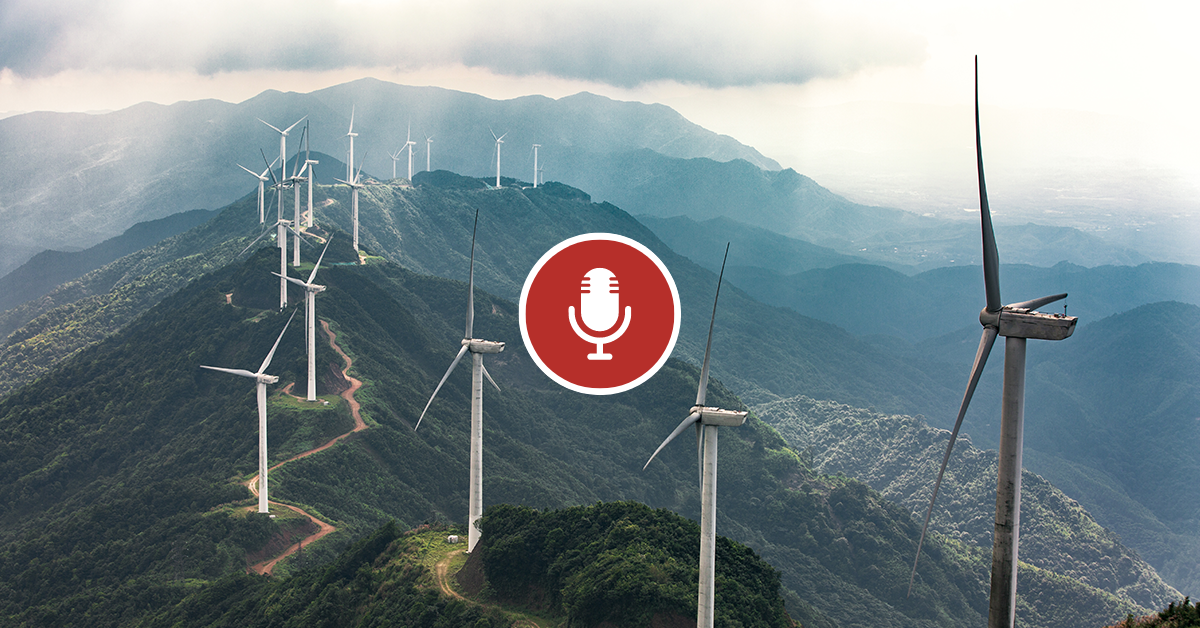In the last decade, public awareness of environmental protection in China has increased due to air pollution, more frequent extreme weather events, and the COVID-19 pandemic. One issue China has grappled with in particular is protection of water resources. Can Americans learn anything from China on water conservation?
For Earth Month, Chinese environmentalist Deng Tingting joins us to discuss environmental issues in China — the impact of electric vehicles, bike share programs, food delivery platforms, and more. She also explains the “river chief” system and other initiatives by the Chinese government to increase the drinkable water supply.
Learn more about the U.S., China, and the environment here.
View more U.S.-China Insights videos

Deng Tingting
Tingting has worked in the environment protection area in China for more than ten years. She serves in an international environmental organization and has led several campaigns, mainly on hazardous chemicals and water pollution. She received her master’s degree in environmental engineering from the Imperial College of London. She is also an alumna of NCUSCR’s Professional Fellows Program.
Transcript
What is the most pressing concern in water protection and conservation today?
Deng Tingting: One of the most pressing concerns in water protection and conservation today is increasing water scarcity and stress caused by climate change, population growth and unsustainable water use practices. The water crisis threatens human health, ecosystems and economic development, particularly in water insecure regions. Climate change is affecting water salt [content] worldwide, and the rising temperature is changing the availability and distribution of water.
Melting glaciers and ice caps have caused sea levels to rise, resulting in salt water intrusion into freshwater sources, making them unusable for human consumption and agriculture. Additionally, more frequent and intense extreme weather events such as floods, hurricanes, and droughts can damage infrastructure, disrupt water supply systems, and compromise drinking water quality. According to UNICEF, 74% of natural disasters between 2001 and 2008 were water-related, including droughts and floods.
The frequency and intensity of these events are increasing further exacerbating water scarcity and contamination. Climate change is a significant driver of the global water crisis. Addressing it is critical to ensure sustainable water management and access to clean and safe water. Proper water management practices can help mitigate the effects of climate change on water resources and to prevent the ongoing water crisis.
What is the broader Chinese public’s view of the urgency of environmental protection?
Deng Tingting:
In the last decade, public awareness of environmental protection in China has increased due to air pollution, more frequent extreme weather events, and the COVID-19 pandemic, highlighting the relationship between human beings and nature. Since China announced its objective of achieving carbon neutrality by 2020, the environment has become a quite popular topic in China. The Chinese government has implemented various measures to promote a more environmentally friendly lifestyle.
In recent years, in 2019, China released the Zero Waste Plan, which included advocating for a “clean plate campaign” and introducing forced [mandatory] community waste classification. These measures have directly impacted urban citizens’ lives and made household garbage a daily topic. Additionally, the bike share industry has gained popularity, which contributes to reducing carbon emissions significantly. However, there is still a long way to go from recognizing environmental problems to taking action on proactively changing lifestyles.
For example, China’s food delivery market has grown nearly 40-fold in the last decade. With more than half of Internet users in China using online food delivery services as of the end of 2021, the fast-developed food delivery industry has led to the use of large amounts of single-use plastic, creating another environmental problem that needs to be addressed.
What can Americans learn from China on improving and protecting water resources?
Deng Tingting:
China’s environmental water quality increased significantly in the last decade. According to China’s annual environment reports, the proportion of surface water with good to excellent quality increased by more than 20% from 2015 to 2022, which means the drinkable surface water in China has reached almost 90%. China has implemented several schemes to improve the quality and protection of its water resources, including stricter regulations, promoting public participation, and increased investment in water treatment infrastructure.
In the last decade, China has shifted the responsibility of water quality management from simply reducing wastewater discharges to a more comprehensive approach, focusing on regional water resource management. By the “river chief” system, local government officials assigned as river chiefs are responsible for coordinating efforts to improve water quality. This system has helped increase accountability and address water quality issues locally.
Public participation has been crucial in driving water quality improvement in China. The government has encouraged citizens’ involvement in implementing, monitoring and reporting, by establishing various channels for citizens to report water pollution incidents and severely polluted waterways. Social media platforms have also raised public awareness and mobilized citizens to take action on environment issues. For example, the Chinese government has launched the “black and odorous water” treatment campaign to encourage citizens to report severely polluted waterways through specific social media channels.
Infrastructure plays an essential role in water resource management. China’s investment in water treatment infrastructure has been increasing steadily. According to data from China Water Risk, China’s spending on urban water supply and wastewater treatment has increased from around ¥90 billion in 2006 to ¥550 billion in 2020. These approaches could also be valuable for improving water quality and protection in other countries.
This transcript has been lightly edited for clarity. Please refer to the video interview to ensure accuracy.
